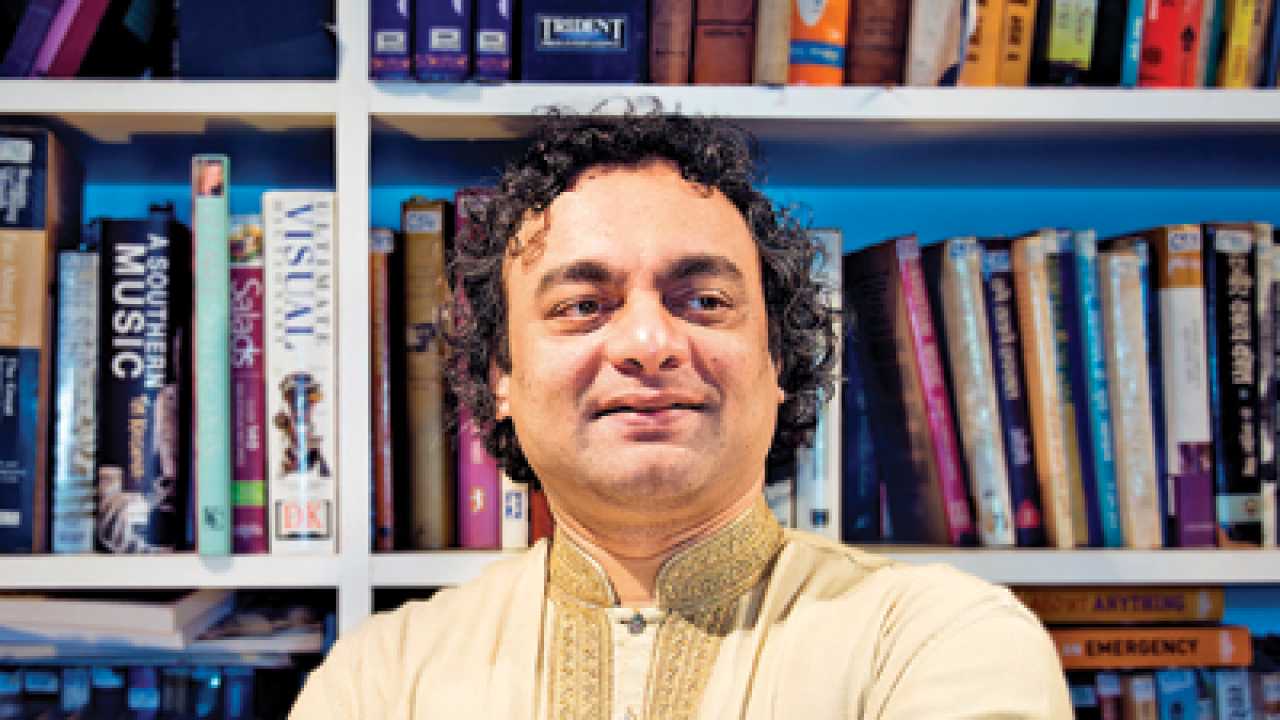
Your book, Hindustani Music in Colonial Bombay, focuses on the city's role in modernising Hindustani music in the colonial era and moulding the ethos surrounding this musical tradition. How did you come upon this idea?
For one, the city did play an important role in this context, and there's historical evidence that amply demonstrates this. I've always been a Bombay person and the city never ceases to amaze me. Being drawn to the city and also having witnessed the challenges that musicians experience in present times, it was but natural for me to ask questions about musicians who'd migrated to the city in search of livelihoods more than 100 years ago. They had come from an environment deeply entrenched in the princely court culture, but their status as court musicians was threatened with the declining feudal patronage in the latter part of the 19th century. Bombay, being the hub of mercantile, industrial and intellectual activity, offered new opportunities for patronage in this situation. I wanted to know about the possible ways that musicians negotiated through circumstances completely alien to them. My questions related to their social organisation in the city, their performance practice, pedagogy, and more.
A quaint mix of mythology and history is often thrown at whoever questions the history of Indian music. How tough was it going about methodically contextualising it?
Much of the material I had access to was scattered in various primary and secondary sources in regional languages, particularly in Marathi and Gujarati. Anecdotal references often seemed to mystify situations and personalities. But I suppose the questions I referred to earlier helped me contextualise the material.
Were there concerns you'd have to bunk fondly held hagiographic views on Indian classical music?
I was aware of the hagiography in writing about those involved in Hindustani music. But there has been path-breaking work done by scholars in recent times, which has already examined the work of many of these personalities afresh. Also, I have to confess that I'm not the first. I must, however, also add that one often comes across problematic areas in some of the new research. For instance, the layered and complex universe of an essentially oral tradition like Hindustani music is often neglected. One can't study a performing tradition and only base one's research on textual sources without looking at the performance element.
The very nature of both patronage and the way music was received by audiences changed in the colonial era. What was its impact, and has it left a lasting impression on music?
This is a huge subject that requires more time and space to discuss. Broadly, private patronage gave way to public patronage that manifested itself in the form of music clubs and circles. Later, ticketed performances were also held in larger auditoria. Technology enabled musicians to reach a wider audience through gramophone records and broadcasting. In the process, musicians changed the manner in which they performed and taught. These changes took place at conscious and sub-conscious levels and in overt and subtle ways. To the extent that today our understanding of what is traditional is often something that was introduced only in the first half of the 20th century.
Many lament the way the British and their Victorian norms targeted women singers of yore, calling them and their art debauched. So much so that even post independence, AIR wouldn't allow such women artistes to perform on air. Your take.
Indeed, women performers were looked down upon by colonial writers and this attitude influenced many among the Indian intellectual elite. This callous attitude was detrimental to women performers and to music in general. It is equally true that most women performers were not regarded very highly even by male performers.
Some scholars have raised questions about appropriation of the classical music tradition by non-hereditary musicians and about the ostensible marginalisation of Muslim musicians. Do you agree?
I am a non-hereditary musician, but I acknowledge the role of hereditary musicians in keeping the tradition alive and enriching it. Unfortunately, there are many non-hereditary musicians today who don't acknowledge this. The appropriation and marginalisation may seem so because there are more non-hereditary musicians today than hereditary ones. There are historical reasons for the entry of non-hereditary musicians into this arena, and not all of them took to this profession because of some grand plan to appropriate the tradition. One comes across statements made by Hindu musicians and scholars from the past that are often communal in nature. But we need to also understand and accept that both Hindu and Muslim musicians were not monolithic entities. There were hierarchies even within musicians from each of these communities. I think these questions require a more nuanced understanding of the past.
Didn't the interface between the south Indian Carnatic style and Hindustani classical music of the north too improve in this era?
There were instances of interaction between Carnatic and Hindustani music, but this element increased post-independence. This was possible because of easier interaction between performers and scholars from both traditions. But more needs to be done in this direction, and at a deeper level, rather than limiting it to concerts.
Could you briefly explain what factors in the colonial era led to vocalists ceding space to instrumental music?
Instrumental music in the early 20th century gradually began gaining prominence, because musicians and craftsmen worked on making instruments more efficient for producing subtleties that were intrinsic to Hindustani music. With the introduction of amplification, this became even more pronounced. This helped instrumental music come into its own.